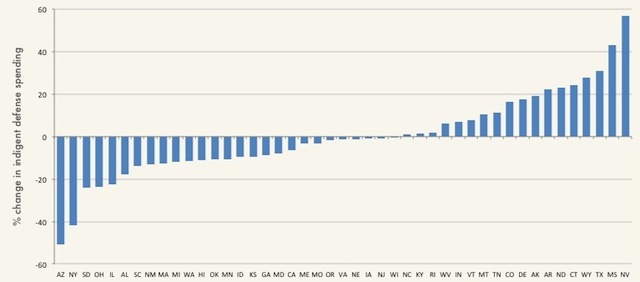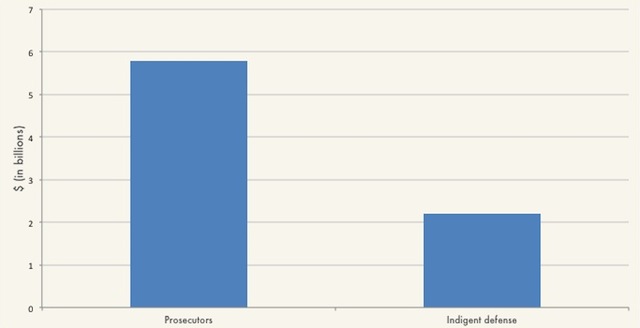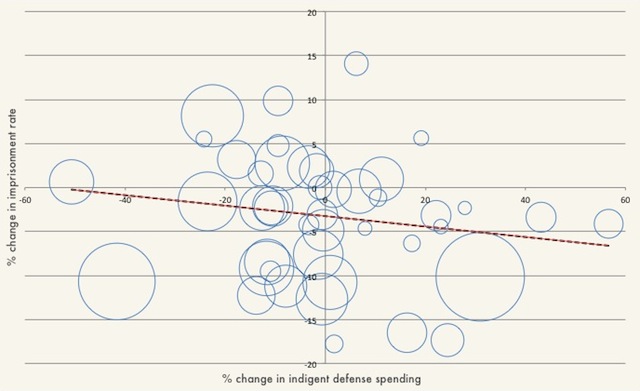Just Facts: A Different Kind of Defense Spending
Just last week the Bureau of Justice Statistics released new data on indigent defense expenditures, and it turns out the situation may not be improving.
Sunday’s New York Times op-ed page highlighted the case of Ernest Dewayne Jones, who spent nearly two decades on death row in California. On July 16, Mr. Jones’s death sentence was vacated by the U.S. District Court for the Central District of California, which cited delays caused by California’s inadequate indigent defense system. The Court wrote that “delay is likely due to the severe shortage of qualified attorneys.”
It’s no secret that public defenders across the country are typically overworked and underfunded. Recent reports — published by the Constitution Project, National Association of Criminal Defense Lawyers, and the Brennan Center — found that “sometimes the defenders have well over 100 clients at a time,” that “the lawyers have crushing caseloads,” that “counsel is unable to spend sufficient time on each of their cases,” and even that “frequently, judges and prosecutors are complicit in these breaches.” The problematic status quo was the subject of the 2013 documentary “Gideon’s Army,” which underscored the failure of our public defense system to live up to the seminal Gideon v. Wainwright Supreme Court ruling recognizing the constitutional right to an attorney for criminal defendants who cannot afford one.
Just last week, the Bureau of Justice Statistics released new data on state government indigent defense expenditures, through the end of fiscal year 2012. And it turns out the situation may not be improving.

Nationwide, $2.2 billion was spent by states on indigent defense in FY 2012 — the lowest amount in the past five years. By comparison, the total budget of all state prosecutors offices is roughly $6 billion a year (this figure is from 2007, the most recent available from BJS).




